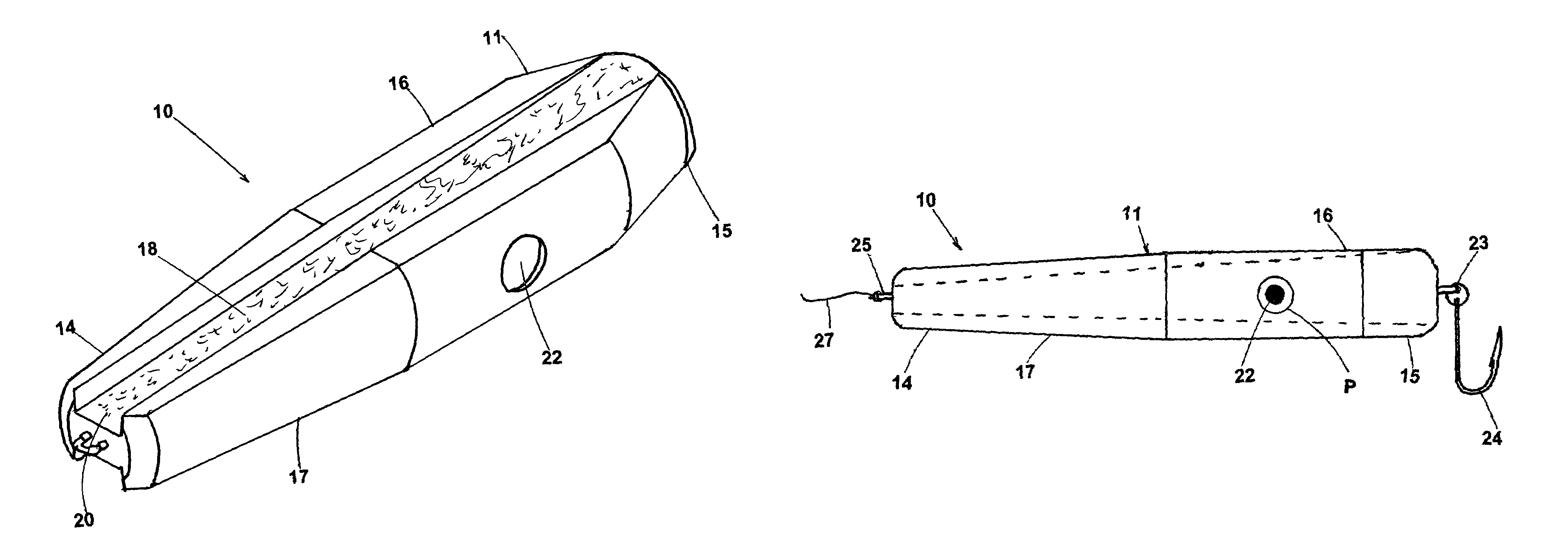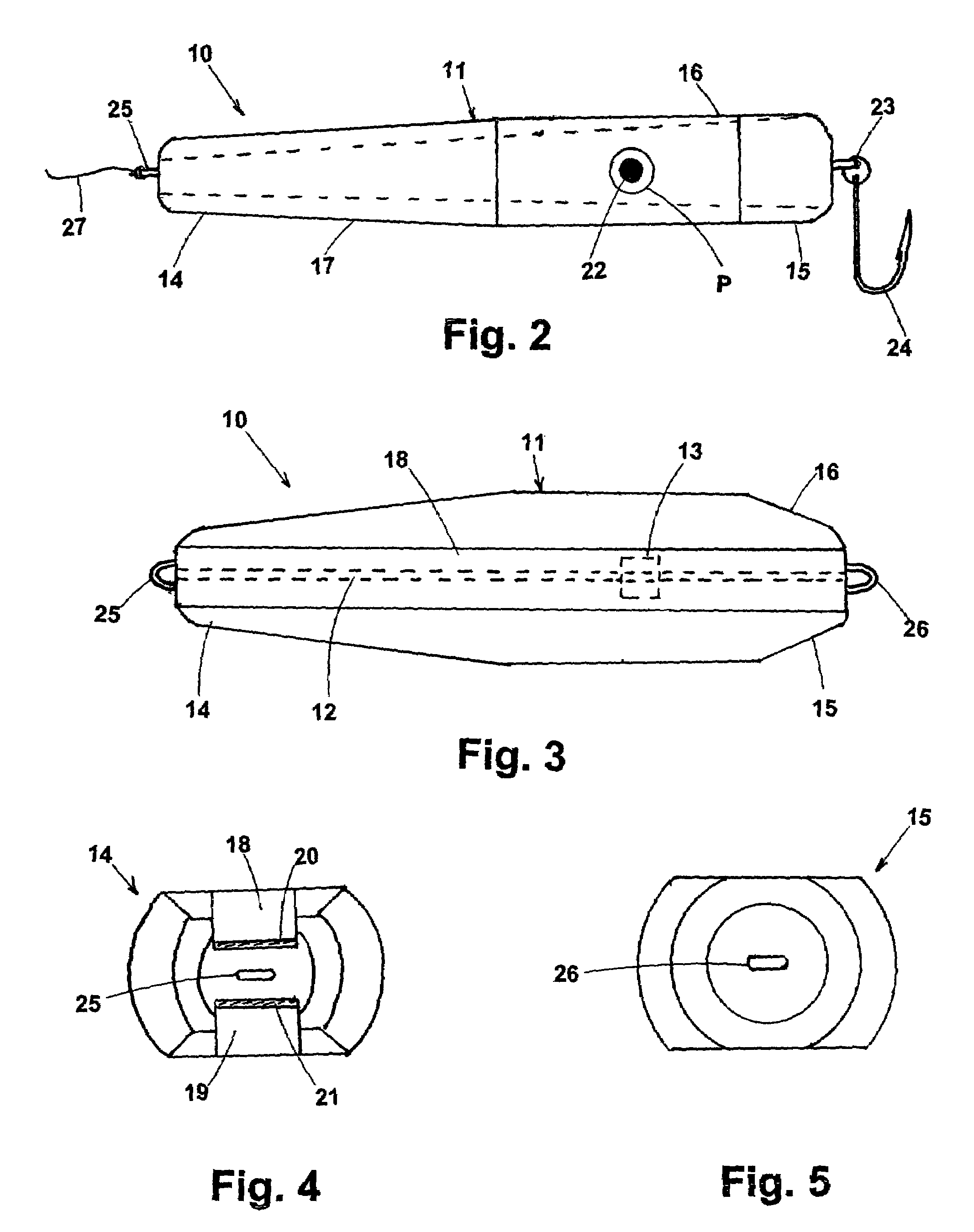Fishing lure
a technology of lures and lures, applied in the field of fishing lures, can solve the problems of frequent problems with the use of such lures, the regular design shape does not aid the accurate casting of lines, the lure is often snagged in underwater debris,
- Summary
- Abstract
- Description
- Claims
- Application Information
AI Technical Summary
Benefits of technology
Problems solved by technology
Method used
Image
Examples
Embodiment Construction
[0020]The fishing lure of the present invention is shown in FIGS. 1 to 5, and is represented by the reference 10. The lure 10 of the present invention is a top water, fishing lure with negative buoyancy. The lure 10 is designed and constructed such that the angler may cast the lure 10 great distances and the retrieval will be at slower rates than conventional negative buoyant lures. This allows the angler to reach actively feeding fish and give the angler the option to vary the retrieval rate in order to provoke strikes from the feeding fish. The lure 10 can be manufactured in various weights and colors to allow the angler to select the proper lure for the particular fishing conditions. The lure 10 has been designed to resemble a squid with its tapered construction and large eye positioned toward the trailing end of the lure 10.
[0021]The lure 10 includes an elongated generally tapered body 11 having a leading end 14 and a spaced apart trailing end 15. While many suitable materials m...
PUM
 Login to View More
Login to View More Abstract
Description
Claims
Application Information
 Login to View More
Login to View More - R&D
- Intellectual Property
- Life Sciences
- Materials
- Tech Scout
- Unparalleled Data Quality
- Higher Quality Content
- 60% Fewer Hallucinations
Browse by: Latest US Patents, China's latest patents, Technical Efficacy Thesaurus, Application Domain, Technology Topic, Popular Technical Reports.
© 2025 PatSnap. All rights reserved.Legal|Privacy policy|Modern Slavery Act Transparency Statement|Sitemap|About US| Contact US: help@patsnap.com



